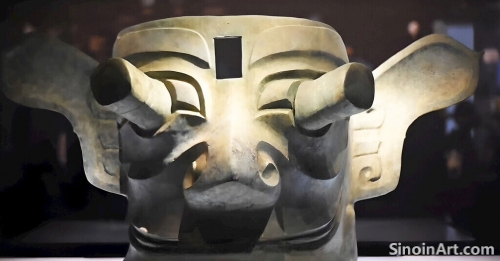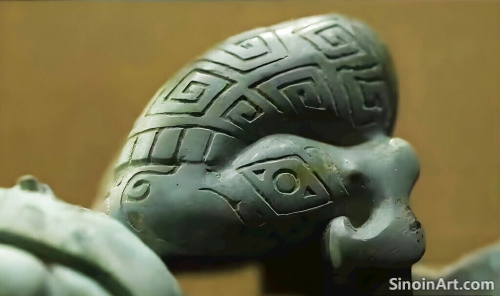The Discovery and Interpretation of New Bronze Ware Sites: Unveiling the Secrets of the Past
|
Ongoing archaeological discoveries continue to reveal new bronze ware sites in China, each providing valuable insights into the artistic, technological, and cultural practices of the ancient world. The uncovering of these sites helps to reshape our understanding of the history of ancient China. Each new discovery offers a glimpse into previously unknown aspects of past culture and tradition.  The excavation of new sites is a complex process that requires careful planning, documentation, and collaboration between archaeologists, historians, and other experts, as well as careful attention to the cultural and historical context of each object as it is unearthed. The care taken in uncovering these sites ensures that a maximum amount of knowledge can be gleaned from them.  The analysis of new bronze artifacts, combined with detailed archaeological context, can help to answer questions about the daily life, beliefs, and technologies of the people who created these objects. The analysis of artifacts, in combination with the context of their discovery, helps to build a more comprehensive understanding of the past. These new discoveries also allow us to continue to reassess what we believe we know about ancient Chinese culture.  New technologies are helping to enhance the analysis of bronze artifacts, allowing for a greater understanding of material composition, casting techniques, and the stylistic and cultural influences on the work. The use of new technologies continues to expand our knowledge and to provide new insights into the past. The ongoing discoveries and research in the area of ancient Chinese metalworking help to continue to expand our understanding of this fascinating art form. The careful study of new archaeological sites is helping to reshape and redefine our understanding of ancient Chinese culture. |
Tag : bronze discoveries, archaeological sites, Chinese excavations, artifact analysis, research methods
Related information
- Bronze Ware and Ancient Chinese Trade: Examining the Role of Material Culture in Economic Exchange
- The Role of Bronze Ware in Ancient Chinese Trade with Southeast Asia: Exchange of Goods and Cultural Ideas
- The Influence of Bronze Ware on the Development of Ancient Chinese Military Strategy and Tactics
- The Impact of the Silk Road on the Styles and Techniques of Chinese Bronze Ware
- Unveiling Ancient China: An Introduction to Chinese Bronze Ware
This article explores the role of bronze ware in ancient Chinese trade, highlighting its use as a valuable commodity, its impact on shaping trade routes and market systems, and its contribution to the broader economic landscape of the time.
This article explores the role of bronze ware in ancient Chinese trade with Southeast Asia, highlighting the exchange of goods, the spread of cultural ideas, and the impact on both economic and artistic development across the region.
This article explores the influence of bronze ware on ancient Chinese military strategy and tactics, highlighting its role in the development of weapons, armor, chariots, and how these technologies transformed the nature of ancient warfare.
This article explores the impact of the Silk Road on Chinese bronze ware, highlighting the introduction of foreign motifs, new techniques, and how the exchange of goods and ideas shaped the styles and forms of bronze artifacts in ancient China.
This article provides an introduction to Chinese bronze ware, exploring their creation, functions, cultural significance, and their enduring legacy as symbols of ancient China’s artistry and technological achievement.